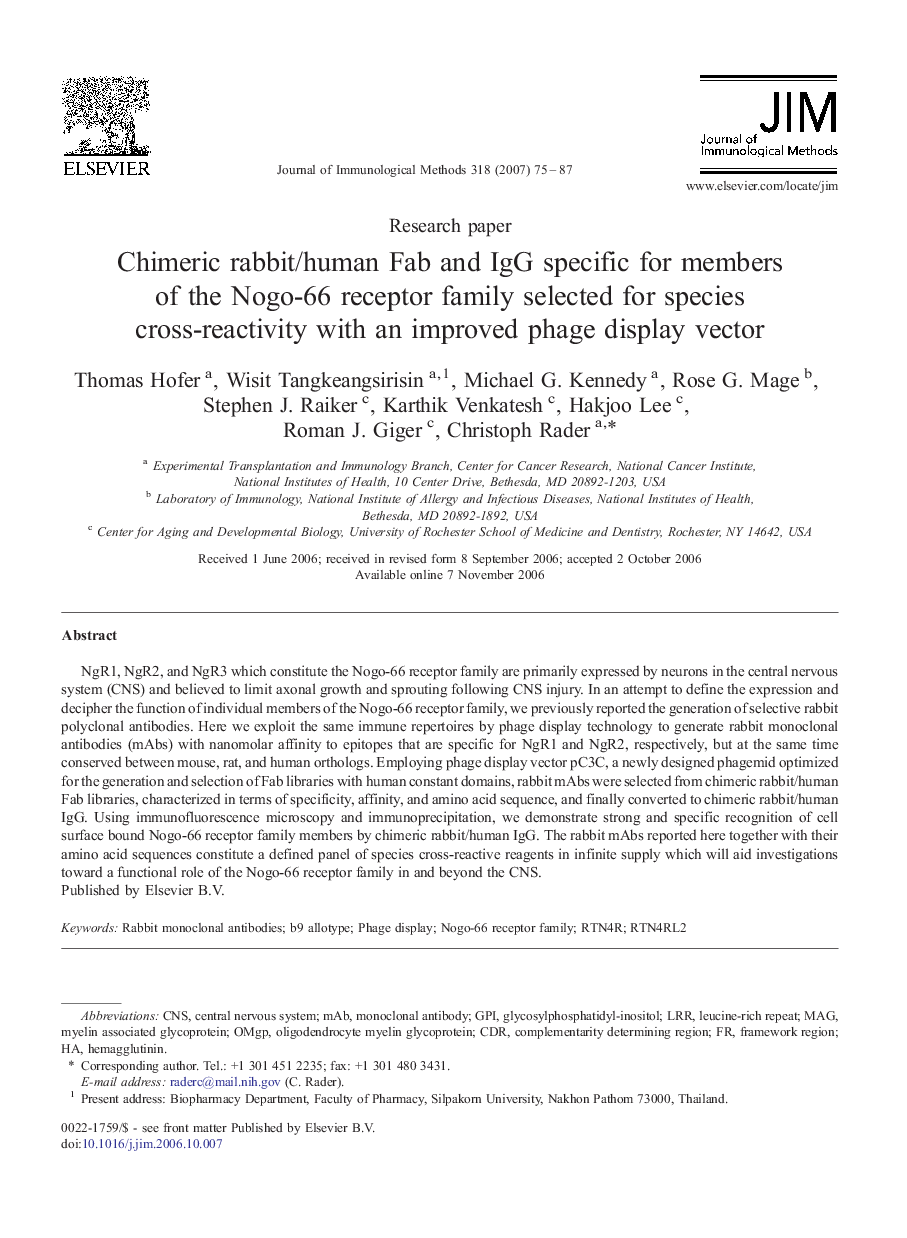| Article ID | Journal | Published Year | Pages | File Type |
|---|---|---|---|---|
| 2089212 | Journal of Immunological Methods | 2007 | 13 Pages |
NgR1, NgR2, and NgR3 which constitute the Nogo-66 receptor family are primarily expressed by neurons in the central nervous system (CNS) and believed to limit axonal growth and sprouting following CNS injury. In an attempt to define the expression and decipher the function of individual members of the Nogo-66 receptor family, we previously reported the generation of selective rabbit polyclonal antibodies. Here we exploit the same immune repertoires by phage display technology to generate rabbit monoclonal antibodies (mAbs) with nanomolar affinity to epitopes that are specific for NgR1 and NgR2, respectively, but at the same time conserved between mouse, rat, and human orthologs. Employing phage display vector pC3C, a newly designed phagemid optimized for the generation and selection of Fab libraries with human constant domains, rabbit mAbs were selected from chimeric rabbit/human Fab libraries, characterized in terms of specificity, affinity, and amino acid sequence, and finally converted to chimeric rabbit/human IgG. Using immunofluorescence microscopy and immunoprecipitation, we demonstrate strong and specific recognition of cell surface bound Nogo-66 receptor family members by chimeric rabbit/human IgG. The rabbit mAbs reported here together with their amino acid sequences constitute a defined panel of species cross-reactive reagents in infinite supply which will aid investigations toward a functional role of the Nogo-66 receptor family in and beyond the CNS.
